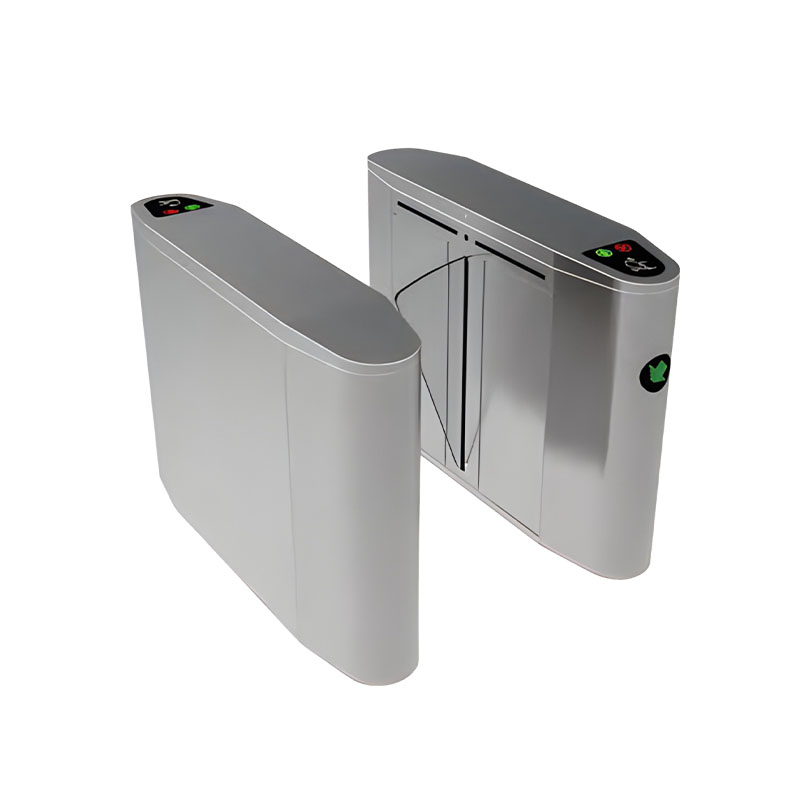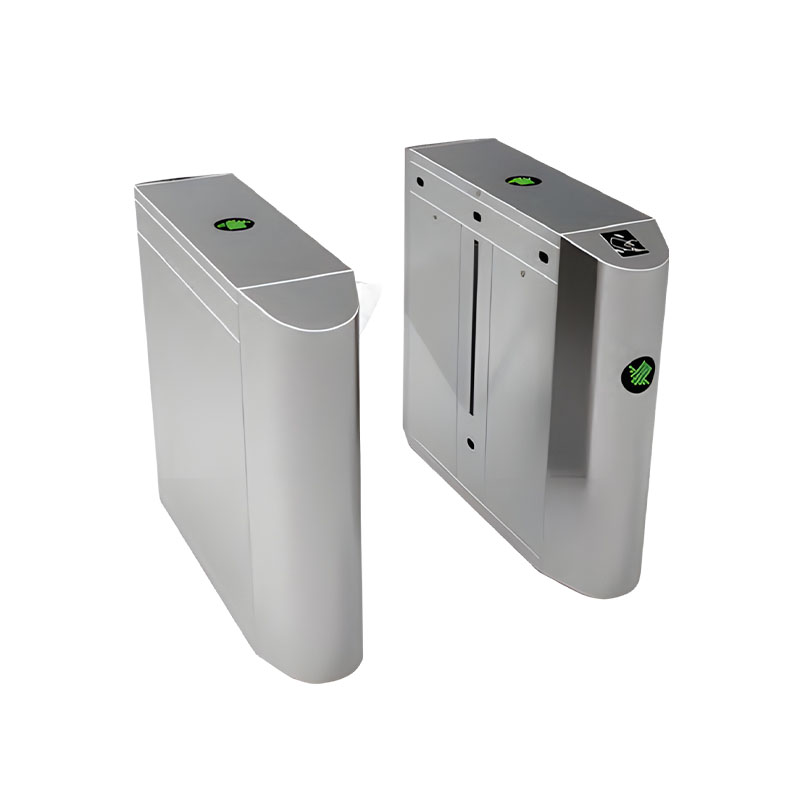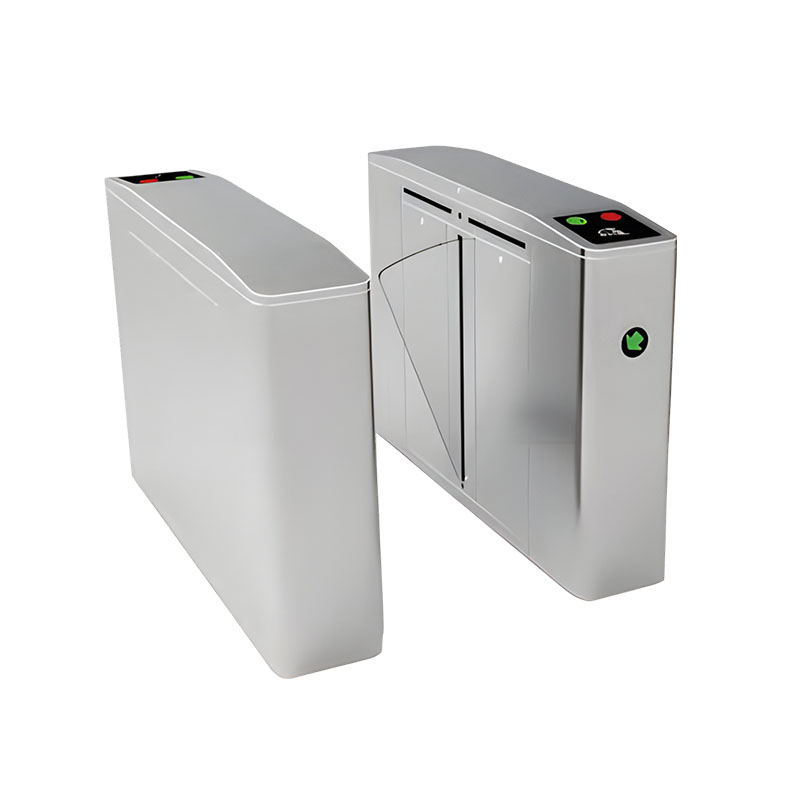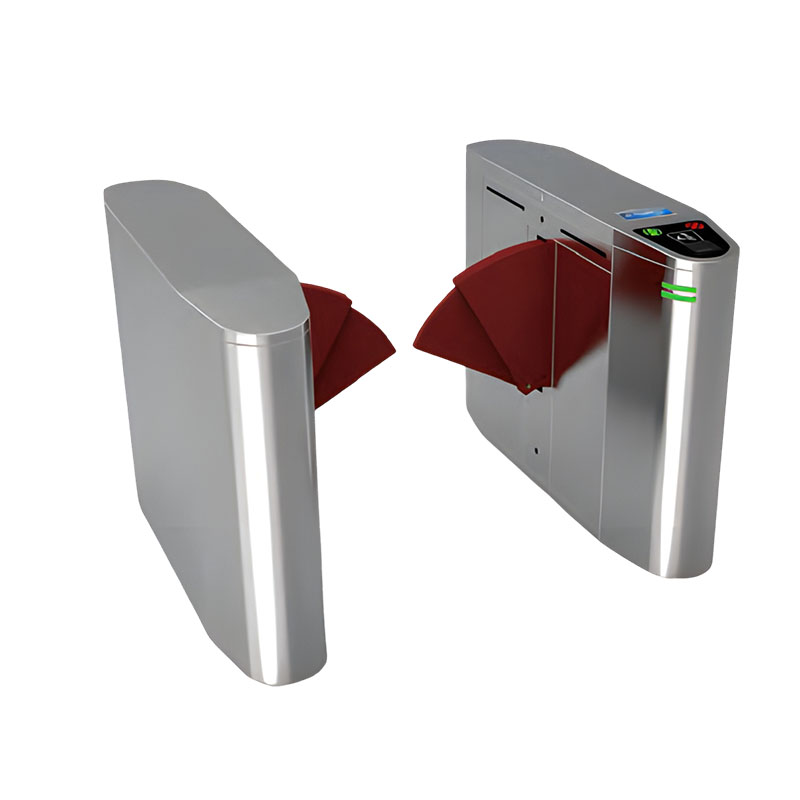How can pedestrian access gates improve the office building experience during peak hours?
Release Time : 2025-10-20
In modern urban office environments, office buildings often face immense traffic pressure during peak hours: employees clock in, visitors arrive, and couriers frequently come and go. Traditional manual verification or standard access control systems easily lead to congestion and long queues at entrances, impacting not only access efficiency but also the overall building image and user experience. As the core device for intelligent access management, pedestrian access gates (also known as pedestrian access control systems or gates) are becoming a key solution for improving the office building experience during peak hours due to their efficiency, security, and intelligence.
1. Rapid Identification, Enabling "Contactless Passage"
Modern office building access gates commonly integrate multiple recognition methods, including facial recognition, card swiping, and QR code scanning, with facial recognition being the most prominent. After registering, employees simply scan their face for instant identity verification, and the gate automatically opens. The entire process takes less than a second, truly enabling "contactless passage." Compared to the cumbersome steps of traditional card swiping, which requires taking out the card, searching for it, and swiping it, facial recognition eliminates the need for any additional steps. Passengers can pass smoothly even while carrying items in both hands, significantly improving traffic speeds during peak hours. Furthermore, high-end access gates support features such as mask recognition, strong light/backlight optimization, and liveness detection, ensuring up to 99.9% recognition accuracy in complex environments and preventing congestion caused by false positives or rejections.
2. High-speed response, ensuring continuous traffic flow
Targeting the dense flow of people during the morning rush hour in office buildings, access gates such as swing gates, flap gates, and speed gates feature rapid opening and closing mechanisms. Opening response times can be controlled within 0.3–0.5 seconds, and closing times are equally rapid, effectively shortening the interval between each person passing through. For example, a standard flap gate can accommodate 30–45 people per minute, far exceeding the efficiency of manual verification. Furthermore, some access gates support multi-channel parallel management. Multiple gates operate in parallel, combined with diversion barriers and floor signs, to divert traffic, avoid bottlenecks in a single channel, and significantly alleviate peak-hour congestion.
3. Intelligent Anti-Tailgating: Balancing Safety and Efficiency
High efficiency shouldn't come at the expense of safety. The gates are equipped with multiple infrared sensors to accurately detect the number of people passing through. Once the system detects a person passing through, if someone follows them, the gate will immediately trigger an alarm and remain closed, effectively preventing "tailgating and intrusion." Furthermore, the system can connect with surveillance cameras to capture unusual activity, ensuring comprehensive security and control. For those carrying large items or pushing strollers, some gates offer wide aisles or barrier-free express gates. Upon authorization, these gates automatically open to a wider area, ensuring smooth passage for those with special needs.
4. Integrated Management: Optimizing Overall Operations
The gates seamlessly integrate with the office building's access control, time and attendance, and visitor management systems. Visitors can make reservations in advance through the mini-app, and the system automatically generates a QR code or dynamic facial recognition authorization. Upon arrival, visitors can simply scan the code or scan their face to enter, eliminating the need for long waits at the front desk. Couriers and food delivery personnel can also limit access to specific time periods and areas, improving management standards. In the backend, managers can view real-time access data and abnormal alarm records for each channel, allowing them to adjust operational strategies promptly. In emergencies, the access gate supports fire alarm linkage, automatically opening upon receiving a fire alarm signal to ensure rapid evacuation.
5. Enhanced Building Image and User Experience
The uniform access gate system not only enhances office building security but also enhances the sense of technology and modernity, becoming a key hallmark of smart buildings. The smooth access experience makes employees and visitors feel efficient and respected, indirectly improving the company's image and employee satisfaction.
In summary, the pedestrian access gate significantly improves office building traffic efficiency and user experience during peak hours, while ensuring safety, through rapid identification, high-speed access, intelligent anti-tailgating, system integration, and user-friendly design. It serves not only as a "gatekeeper" of physical entrances and exits but also as a "traffic dispatch hub" in the smart office ecosystem, providing an efficient, intelligent, and user-friendly solution for modern urban building management.
1. Rapid Identification, Enabling "Contactless Passage"
Modern office building access gates commonly integrate multiple recognition methods, including facial recognition, card swiping, and QR code scanning, with facial recognition being the most prominent. After registering, employees simply scan their face for instant identity verification, and the gate automatically opens. The entire process takes less than a second, truly enabling "contactless passage." Compared to the cumbersome steps of traditional card swiping, which requires taking out the card, searching for it, and swiping it, facial recognition eliminates the need for any additional steps. Passengers can pass smoothly even while carrying items in both hands, significantly improving traffic speeds during peak hours. Furthermore, high-end access gates support features such as mask recognition, strong light/backlight optimization, and liveness detection, ensuring up to 99.9% recognition accuracy in complex environments and preventing congestion caused by false positives or rejections.
2. High-speed response, ensuring continuous traffic flow
Targeting the dense flow of people during the morning rush hour in office buildings, access gates such as swing gates, flap gates, and speed gates feature rapid opening and closing mechanisms. Opening response times can be controlled within 0.3–0.5 seconds, and closing times are equally rapid, effectively shortening the interval between each person passing through. For example, a standard flap gate can accommodate 30–45 people per minute, far exceeding the efficiency of manual verification. Furthermore, some access gates support multi-channel parallel management. Multiple gates operate in parallel, combined with diversion barriers and floor signs, to divert traffic, avoid bottlenecks in a single channel, and significantly alleviate peak-hour congestion.
3. Intelligent Anti-Tailgating: Balancing Safety and Efficiency
High efficiency shouldn't come at the expense of safety. The gates are equipped with multiple infrared sensors to accurately detect the number of people passing through. Once the system detects a person passing through, if someone follows them, the gate will immediately trigger an alarm and remain closed, effectively preventing "tailgating and intrusion." Furthermore, the system can connect with surveillance cameras to capture unusual activity, ensuring comprehensive security and control. For those carrying large items or pushing strollers, some gates offer wide aisles or barrier-free express gates. Upon authorization, these gates automatically open to a wider area, ensuring smooth passage for those with special needs.
4. Integrated Management: Optimizing Overall Operations
The gates seamlessly integrate with the office building's access control, time and attendance, and visitor management systems. Visitors can make reservations in advance through the mini-app, and the system automatically generates a QR code or dynamic facial recognition authorization. Upon arrival, visitors can simply scan the code or scan their face to enter, eliminating the need for long waits at the front desk. Couriers and food delivery personnel can also limit access to specific time periods and areas, improving management standards. In the backend, managers can view real-time access data and abnormal alarm records for each channel, allowing them to adjust operational strategies promptly. In emergencies, the access gate supports fire alarm linkage, automatically opening upon receiving a fire alarm signal to ensure rapid evacuation.
5. Enhanced Building Image and User Experience
The uniform access gate system not only enhances office building security but also enhances the sense of technology and modernity, becoming a key hallmark of smart buildings. The smooth access experience makes employees and visitors feel efficient and respected, indirectly improving the company's image and employee satisfaction.
In summary, the pedestrian access gate significantly improves office building traffic efficiency and user experience during peak hours, while ensuring safety, through rapid identification, high-speed access, intelligent anti-tailgating, system integration, and user-friendly design. It serves not only as a "gatekeeper" of physical entrances and exits but also as a "traffic dispatch hub" in the smart office ecosystem, providing an efficient, intelligent, and user-friendly solution for modern urban building management.







